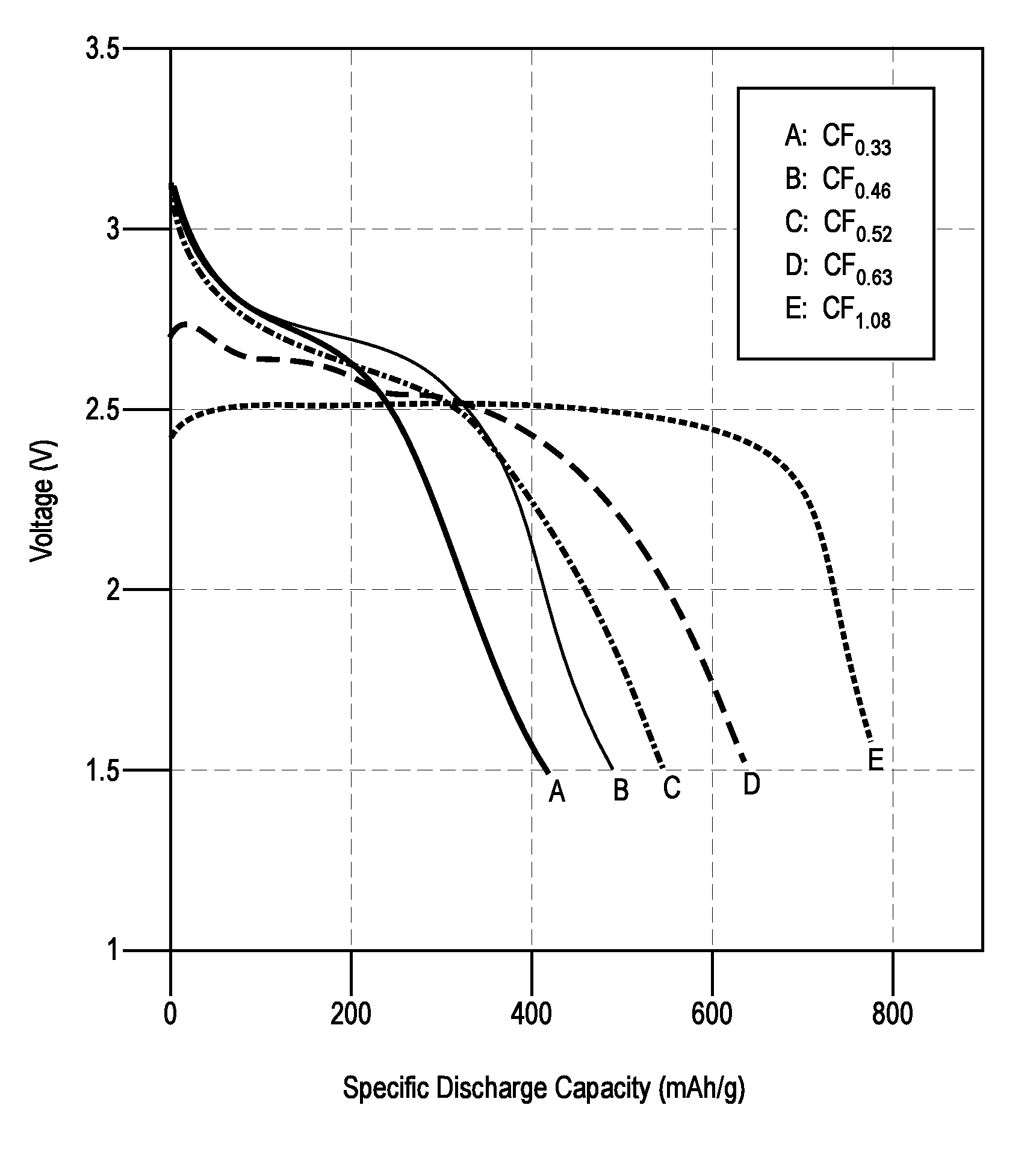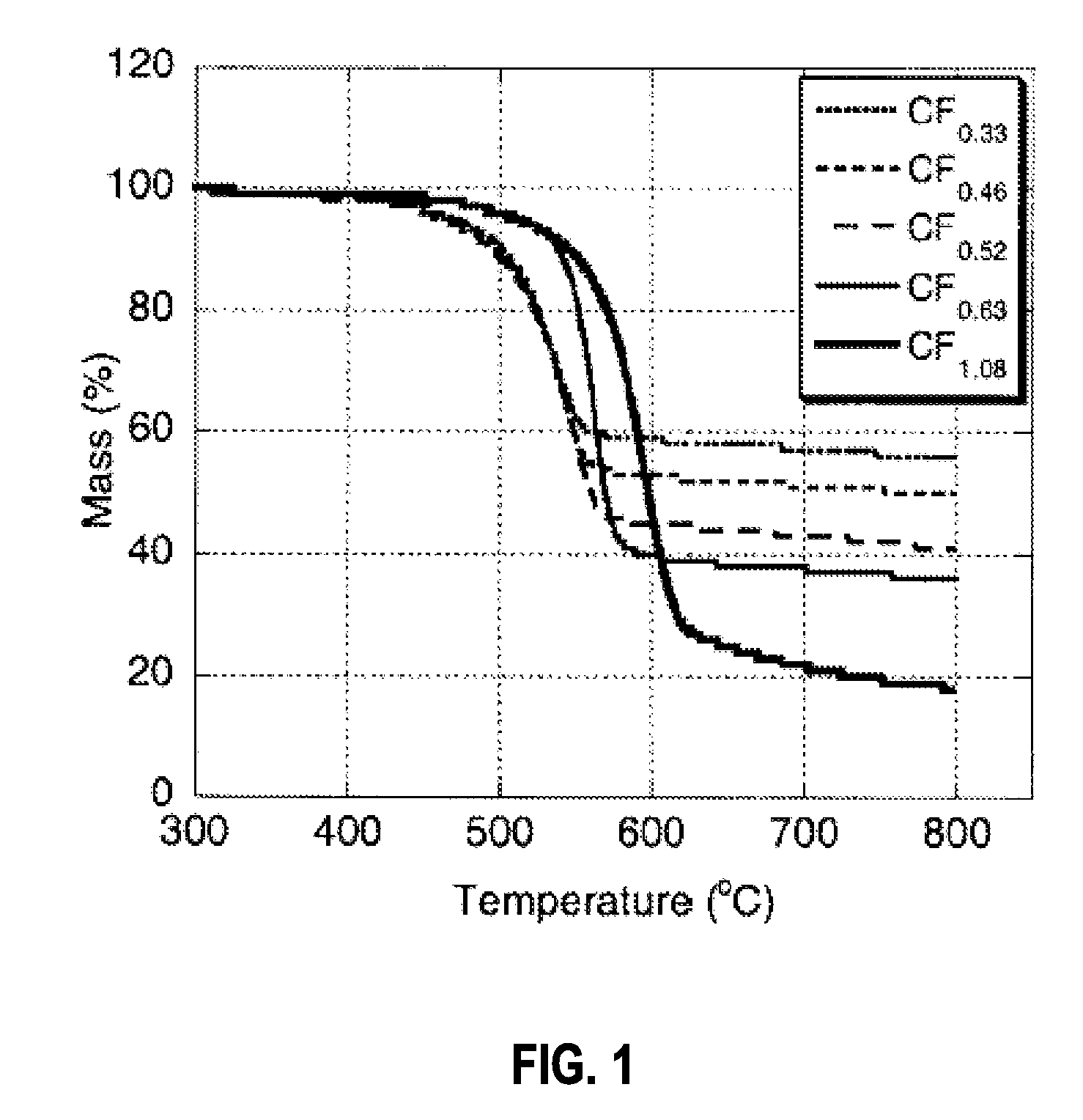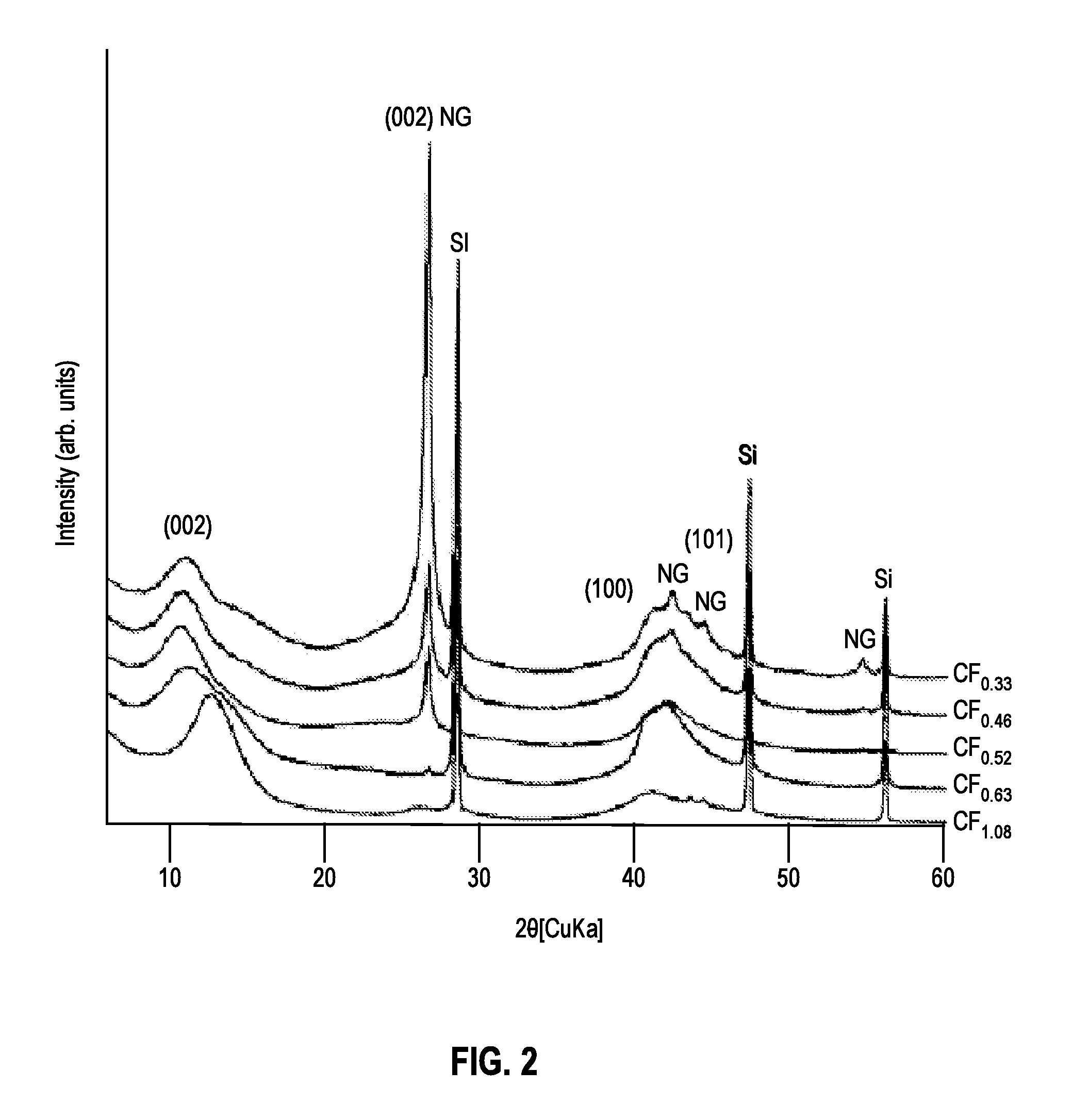Subfluorinated graphite fluorides as electrode materials
a technology electrode material, which is applied in the field of subfluorinated graphite fluoride, can solve the problems of poor electrical conductivity and low rate performance of li/cf batteries, and achieve the effect of increasing battery performance and high ra
- Summary
- Abstract
- Description
- Claims
- Application Information
AI Technical Summary
Benefits of technology
Problems solved by technology
Method used
Image
Examples
example 1
Synthesis of (CFx)n Materials
[0043]Four samples of (CFx)n (A, B, C, D) were synthesized by direct fluorination of a natural graphite powder from Madagascar obtained from Centre National de la Recherche Scientifique (CNRS, France) and Clermont-Ferrand University Lab (France). The average particle size for the precursor was 7.5 μm for samples A, B, and D whereas an average particle size of 4 μm was used for sample C. The fluorination temperature ranged from 375° C. to 400° C., and was adjusted to obtain the desired F / C ratios. A battery grade carbon monofluoride (E) derived from a petroleum coke was obtained from Advance Research Chemicals Inc. (ARC, Tulsa, Okla., USA). Table 1 summarizes the synthesis conditions used for each sample:
[0044]
TABLE 1Synthesis conditions for the (CFx)n samplesSampleABCDEPrecursorNGNGNGNGCokeParticle Size~7.5 μm~7.5 μm~4 μm~7.5 μm~15-30 μmTemperature375° C.380° C.390° C.400° C.N / ADuration17 hrs32 hrs20 hrs80 hrsN / ANG = natural graphite
example 2
Physical Characterization of (CFx)n Materials
Methods:
[0045]Scanning electron microscopy (SEM, JEOL instrument) was performed to observe the particles' morphology and analyze their composition via electron-dispersive x-ray (EDX) spectrometry. Micrographs were taken at various magnifications ranging from 500× to 10,000×.
[0046]The chemical composition of each sample was determined using several methods. For samples A-D, the weight uptake during the fluorination reaction was used to determine the F / C ratio. EDX spectrometry provided semi-quantitative analyses of carbon and fluorine for all samples. These measurements were acquired on the SEM JEOL instrument with a Li-drifted Si crystal detector, at a working distance of 10 mm, and analyzed using INCA software. Additional elemental analysis was performed for sample E by a carbonate fusion method at ARC.
[0047]The thermal stability of the material was investigated by thermogravimetric analysis (TGA) performed on a Perkin Elmer Pyris Diamon...
example 3
Electrochemical Performance of (CFx)n Materials
[0058]Conventional 2032 coin cells were assembled to test the electrochemical performance of the (CFx)s materials. The cathode was prepared by spreading a slurry of 5 g (CFx)n, 0.62 g carbon black, and 0.56 g polytetrafluoroethylene (PTFE)-based binder on an aluminum substrate. The anode was a lithium metal disc, and the separator consisted of a microporous polypropylene Celgard® 2500 membrane. The thicknesses of the cathode, anode, and separator were 15 mm, 16 mm, and 17.5 mm respectively. The electrolyte used was 1.2M LiBF4 in a 3:7 v / v mixture of propylene carbonate (PC) and dimethyl ether (DME). Stainless steel spacers and a wave washer were used to maintain sufficient pressure inside the coin cell. The coin cells were discharged on an Arbin instrument by applying a constant current with a voltage cutoff of 1.5 V. The discharge rates ranged from 0.01 C to 2.5 C, at room temperature. The C-rate calculation was based on a theoretical ...
PUM
| Property | Measurement | Unit |
|---|---|---|
| particle size | aaaaa | aaaaa |
| particle size | aaaaa | aaaaa |
| particle size | aaaaa | aaaaa |
Abstract
Description
Claims
Application Information
 Login to View More
Login to View More - R&D
- Intellectual Property
- Life Sciences
- Materials
- Tech Scout
- Unparalleled Data Quality
- Higher Quality Content
- 60% Fewer Hallucinations
Browse by: Latest US Patents, China's latest patents, Technical Efficacy Thesaurus, Application Domain, Technology Topic, Popular Technical Reports.
© 2025 PatSnap. All rights reserved.Legal|Privacy policy|Modern Slavery Act Transparency Statement|Sitemap|About US| Contact US: help@patsnap.com



